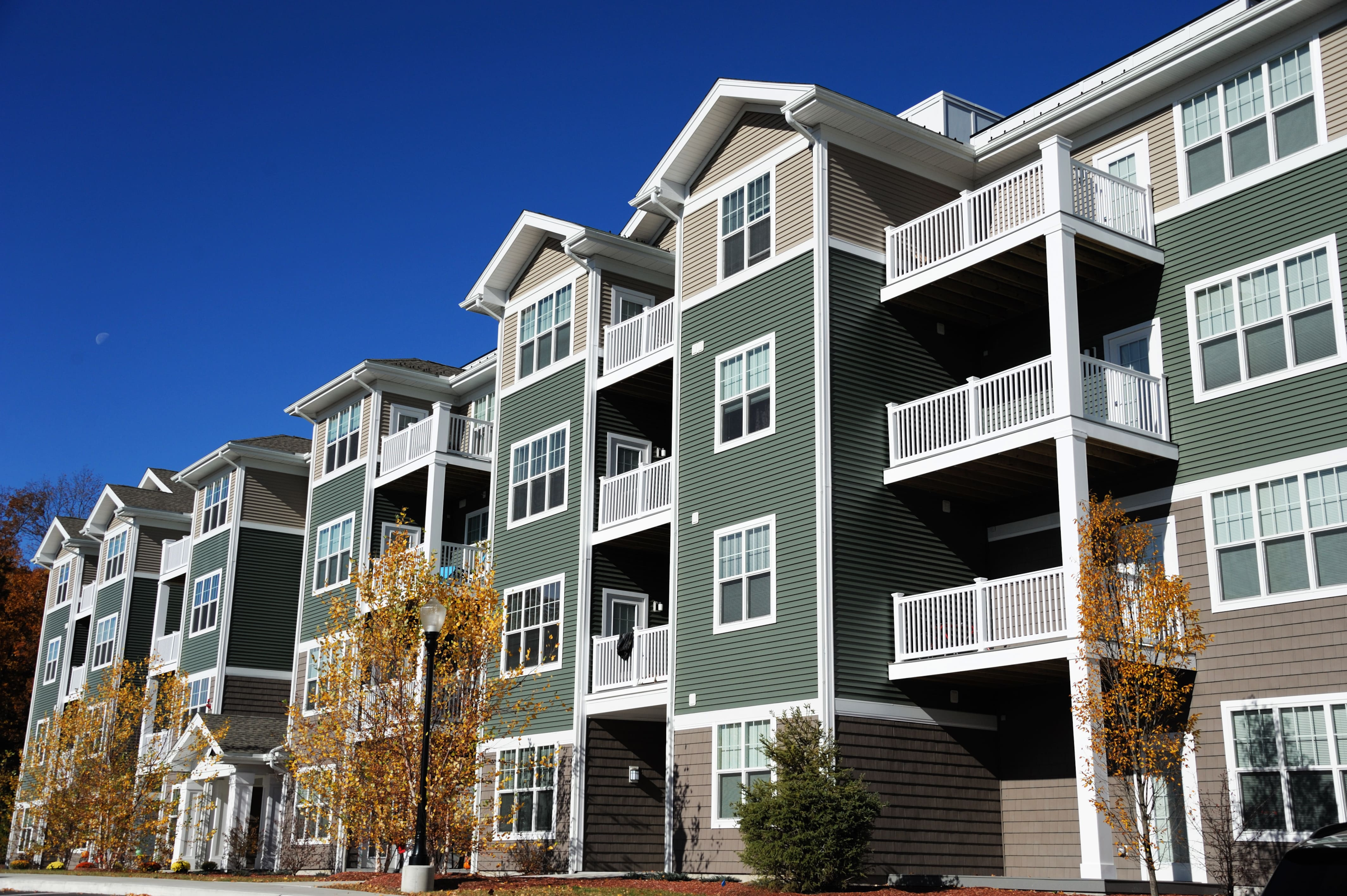
Have you ever fantasized about being a real estate tycoon? Well, the moment is here! The rental property market is brimming with profitable investment prospects, and we’re here to navigate you through the top ten cities to invest for purchasing rental property. We’ll also discuss the critical factors to consider, ensuring your investment decision is a smart one. Fasten your seatbelts and prepare to delve into the world of successful rental property investment!
Key Takeaways
- Invest in the top 10 cities for rental property investment in 2023 and reap the rewards!
- Consider job growth, population growth, affordability & more when choosing a city.
- Get savvy with research, team building & financial management to ensure success!
Suggested Posts:
Best Key Lock Boxes: A Buyer’s Guide for Safe Key Storing
Apartment Intercom System: Ultimate Buyer’s Guide (2023)
The Best Apartment Intercom Systems (2023)
Key Card Door Entry Systems: Discovering The Benefits
Understanding the Essentials of a Profitable City for Rental Investments

As a real estate investor, it’s important to remember that rental properties are a long-term commitment. This is not a quick flip; you need to look at the bigger picture, assessing the city’s potential for growth and demand.
The following are various data points we used to assess the cities on this list, along with the sources of the data.
- Average Home Value. The average value of homes in a city is a key indicator of affordability. If the down payment of a $1,000,000 rental property in San Francisco is $200,000 and you can’t afford it, then it’s pointless to consider that market. Zillow’s Home Value Index, while not identical to median home prices, is a close approximation and provides useful data like growth projections for the upcoming year. (Source: Zillow)
- Year-over-Year (YoY) Home Price Growth. This represents the percentage rise in home values over the last year. (Source: Zillow)
- Projected One-Year Home Price Growth. As the name suggests, this is the expected increase in home prices over the next year. (Source: Zillow)
- Rent Index. This is similar to the median rents in a particular city. (Source: Zillow)
- YoY Rent Growth. This is the percentage change in rents over the last year. (Source: Zillow)
- Gross Rent Multiplier. This is a simple ratio of the home price divided by annual rents, using citywide averages. It represents the number of years it would take for gross rents to cover a property’s purchase price. For instance, a $120,000 home generating $12,000 in gross annual rents would have a gross rent multiplier of 10. Remember, these are gross rents and do not account for any expenses.
- Unemployment Rate. This is a measure of economic health and provides insight into whether residents can afford to spend more on housing. A robust job market attracts more working-age residents, boosting population growth and housing demand. (Source: Bureau of Labor Statistics (BLS))
- YoY Job Growth Rate. This is the percentage increase in total jobs in the city over the last year. Along with population growth, it indicates a demand for real estate. (Source: BLS Current Employment Statistics)
- Median Age. The median age in a city is another indicator of potential growth. Generally, the younger the median age, the more dynamic its economy and the greater its potential for future growth. Young adults and children drive both population and economic growth. (Source: Census Data)
- Population Growth 2013 to 2023. This is not an annual growth rate, but rather the total percentage of the population increase between 2013 and 2023. (Source: Census Data)
One critical aspect for real estate investors to consider is the capitalization rate, often referred to as the cap rate. However, we haven’t included this in our analysis as cap rates can fluctuate greatly depending on real estate prices and expense figures. These expenses can differ based on the neighborhood, type of property, and the specific property itself. Certain cities (and even specific areas within these cities) can have higher expenses than others, price to rent ratio but this data isn’t readily accessible.
Top 10 Cities for Rental Property Investment in 2023

When it comes to real estate investment, the mantra “location, location, location” rings true. Astute investors understand that not all cities offer the same potential for return on investment. Considering elements such as job growth, population increase, and low cost of living, we’ve put together a ranking of the top 10 urban areas for rental and property values for investment in 2023.
- Austin, Texas
- Cleveland, Ohio
- Tampa, Florida
- Atlanta, Georgia
- Cincinnati, Ohio
- Huntsville, Alabama
- Birmingham, Alabama
- Minneapolis, Minnesota
- St. Paul, Minnesota
- Houston, Texas
Now, let’s unravel the reasons why these cities are the prime spots for rental property investment!
Austin, Texas
Austin, Texas, stands out as an ideal location for rental property investment, thanks to its:
- Thriving tech scene
- Booming population
- High demand for housing
- Limited number of homes for sale
- Strong, diverse economy
Austin has emerged as one of the best real estate markets for rental property investments.
The city’s appeal doesn’t solely rely on the tech industry and population growth; the housing market in Austin is a buyer’s paradise in 2023, with more supply than demand and homes typically sold after just 62 days on the market past year.
Nevertheless, investing in Austin’s vibrant real estate market comes with a few potential challenges. Here are some things to consider.
- You’ll need a set of wheels to get around, as public transportation is limited.
- Summers can be scorching, so be prepared for hot weather.
- Home prices are on the rise, so it may be a competitive market.
Despite these challenges, Austin remains a top choice for rental property investors seeking strong growth potential and strong rental market.
Cleveland, Ohio
Cleveland, Ohio, offers a perfect blend of affordable housing and a booming economy, making it a prime location for rental property investment. With reliable home value appreciation and stable job growth, Cleveland attracts savvy investors looking to invest in rental properties outside of major cities. In Cleveland, the demand for single-family rentals is sky-high, with over half of the housing units occupied by renters.
When it comes to the median rent price for homes in Cleveland, investors are in for a treat. The median home price is almost 40% lower than the average US home price, making Cleveland a budget-friendly investment destination.
Tampa, Florida

Tampa, Florida, is another prime location for rental property investment, boasting:
- Fast population growth
- Steady job opportunities
- A strong economy driven by industries like tourism, healthcare, and finance
- High demand for housing
- A mix of single-family homes and multifamily apartment complexes
These factors make Tampa an attractive investment prospect for rental property investors.
The housing market in Tampa is characterized by relatively low cost affordable home prices, making it an appealing option for investors seeking to maximize their returns. With a growing job market and an increasing population, Tampa’s rental market is expected to remain strong, offering investors the opportunity to capitalize on the city’s growth potential.
Atlanta, Georgia
Atlanta, Georgia, is a fast-growing city with a strong economy, making it an ideal location for rental property investment. The city boasts:
- Affordable housing prices
- A bustling media and entertainment industry, further supporting its strong job market.
Rental rates in Atlanta are soaring, with median monthly rent at an eye-watering $1,927. This high rental demand, coupled with the thriving job market, makes Atlanta an attractive option for real estate investors looking to invest in rental properties.
Cincinnati, Ohio
Cincinnati, Ohio, a city that’s often overlooked in the realm of affordable real estate for investment, is actually a hidden gem for rental property investment. With its:
- Affordable housing market
- Robust job market, especially in sectors such as healthcare, finance, and manufacturing
- Diverse and growing population
- High demand for rental properties, particularly in the urban core and surrounding neighborhoods
- Vibrant cultural scene, with attractions like the Cincinnati Art Museum, Cincinnati Zoo, and Botanical Garden, and the historic Over-the-Rhine district
Cincinnati presents a compelling case for investors seeking a strong return on investment. The city’s cost of living is significantly lower than the national average, making it an attractive location for renters seeking affordability without sacrificing quality of life.
However, as with any real estate investment, potential challenges should be considered. In Cincinnati, these may include the aging housing stock in some neighborhoods and the city’s relatively high property taxes. Despite these potential challenges, the city’s strengths make it a strong contender for those looking to invest in rental property.
Huntsville, Alabama
Huntsville, Alabama, is a city that’s on the rise and is becoming an increasingly attractive option for rental property investment. Known as “Rocket City” due to its strong ties to the U.S. space missions, Huntsville boasts a robust economy with a strong presence in the aerospace and military technology sectors. These industries have led to significant job growth, attracting a skilled and educated workforce to the city’s low cost of living.
Huntsville’s rental market is characterized by high rental yields and steady rent growth. The city offers a mix of single-family homes and multifamily units, providing a range of options for investors. The strong economy, steady job growth, and population growth are expected to continue to drive the demand for rental properties in Huntsville.
Birmingham, Alabama
Birmingham, Alabama, a city rich in history and culture, is a rising star in the realm of rental property investment. Known for its industrial heritage and Southern charm, Birmingham offers a unique blend of affordability, economic stability, and a vibrant lifestyle that makes it a hot spot for rental property investors.
The city’s robust job market, driven by sectors such as healthcare, finance, and manufacturing, coupled with its diverse and growing population, creates a high demand for rental properties. This demand is particularly noticeable in Birmingham’s urban core and suburban neighborhoods, where a mix of single-family homes and multifamily units are available.
Birmingham’s housing market is characterized by affordable prices, offering a fantastic opportunity for investors seeking a strong return on investment. The city’s cost of living median rent is significantly lower than the national average, making it an attractive location for renters seeking affordability without sacrificing quality of life.
Minneapolis, Minnesota
Minneapolis, Minnesota, is a thriving city with a strong economy and a growing population, making it an ideal location for rental property investment. The city is known for its:
- Diverse economy encompassing sectors such as healthcare, finance, and manufacturing
- Growing population, which has led to increased demand for housing
- Vibrant cultural scene, with a multitude of attractions including the Minneapolis Institute of Art, the Walker Art Center, and the historic Mill City Museum
- High quality of life, with excellent schools, a robust job market, and plenty of recreational opportunities
The rental market in Minneapolis is robust, with a high demand for both single-family homes and multifamily units. The city’s housing market is characterized by steady home value appreciation, making it an attractive option for investors seeking a strong return on investment.
St. Paul, Minnesota

St. Paul, Minnesota, the state’s capital, is an appealing location for rental property investment. This city, lovingly known as the “Most Livable City in America,” offers a vibrant blend of metropolitan and suburban living.
- St. Paul boasts a strong economy, driven by sectors such as healthcare, education, and finance, which provides a steady stream of potential tenants for rental properties.
- The city’s population is growing at a steady rate, which increases the demand for housing and, in turn, rental properties.
- The cost of living in St. Paul is relatively low compared to other major cities, making it an attractive location for renters seeking affordability without sacrificing quality of life.
- The city’s rich cultural scene, including attractions like the Science Museum of Minnesota, the Minnesota History Center, and the Como Park Zoo and Conservatory, adds to its appeal for residents.
- St. Paul’s housing market is characterized by a mix of historic homes and modern apartments, offering a wide range of options for investors.
However, potential challenges, such as the city’s relatively high property taxes and the need for effective property management, particularly during the city’s harsh winters, should be considered. Despite these potential challenges, St. Paul’s strengths make it a strong contender for those looking to invest in rental property.
Houston, Texas
Houston, Texas, is a city that’s no stranger to the spotlight when it comes to rental property investment. As the fourth-largest city in the United States, Houston boasts a diverse economy, a thriving and diverse job market here, and a population that continues to grow year after year.
Houston is home to several Fortune 500 companies, including ExxonMobil, ConocoPhillips, and Sysco. These corporations, along with countless others, contribute to a robust job market that attracts professionals from all over the world. This influx of professionals has led to a high demand for rental properties, making Houston a prime location for rental property investment.
The city’s local economy is further bolstered by its status as a global hub for the oil and gas industry. This industry, along with others such as healthcare, aerospace, and manufacturing, contributes to Houston’s strong job growth and economic stability.
Houston’s housing market is characterized by a mix of single-family homes, townhouses, and apartment complexes, providing a wide range of options for investors. With relatively affordable home prices and a high rental demand, Houston offers excellent opportunities for investors seeking a strong return on investment.
However, like any city, Houston has its share of challenges. The city is prone to flooding, which can lead to property damage and increased insurance costs. Additionally, Houston’s property taxes are among the highest in the country, which can impact the profitability of rental properties.
Despite these challenges, Houston’s strong economy, growing population, and high demand for rental properties make it a compelling option for rental property investment.
Importance of Location in Rental Property Investment

The location of your rental property investment is a vital determinant of your success. Elements such as the quality of the neighborhood, rankings of nearby schools, and availability of local amenities can influence the attractiveness of your property. This, in turn, directly affects your rental income and the value of your initial investment in property.
Things to keep in mind:
- Population growth is also an important factor. With a growing population comes an increased demand for housing, so a steady population growth can indicate a strong demand for housing in the area.
- Investing in newer properties can also be beneficial. These properties often have fewer maintenance issues which can lead to higher tenant satisfaction and property tax rates.
- By choosing a location for your rental property that offers a combination of strong growth potential, high-quality amenities, and attractive housing options, you can find investment properties that can maximize the success of your investment.
Market Trends Impacting Rental Property Investment

For any investor aiming to maximize their returns and make wise decisions, comprehending the market trends that shape the rental markets and property investment is vital. These trends can steer various factors, including demand for housing, economic scenarios, and burgeoning industries.
- In the aftermath of the global pandemic, the rise of remote work has led to a surge in demand for rental properties in suburban and rural areas. This shift has diverted the spotlight from traditionally popular urban areas, unearthing new investment opportunities in regions with lower population densities.
- For instance, the real estate market in Phoenix, Arizona, has seen a meteoric rise since the onset of the pandemic, peaking in July and August of 2020. This growth has piqued the interest of investors, particularly those into flipping and wholesaling, who are on the hunt for investment properties and real estate appreciation opportunities in the city.
- Furthermore, economic factors like interest rates, unemployment rates, and inflation can have a substantial impact on rental prices for property investments. For instance, low-interest rates can make financing rental properties more affordable, thereby increasing the demand for these investments.
- New industries can also pave the way for fresh opportunities for rental property investors. For instance, the tech industry’s expansion has led to a spike in demand for rental properties in tech hubs like San Francisco and Seattle.
- By keeping a close eye on these market trends, investors can pinpoint promising opportunities and make more knowledgeable investment decisions. For instance, the National Association of Realtors’ (NAR) latest report suggests that opting for renting is a budget-friendly choice, leading to higher rent yields and increased demand for single-family rentals (SFR) and multifamily rentals.
- Alterations in housing demand, economic dynamics, and emerging industries can introduce both new opportunities and challenges for rental property investors.
- By keeping up to date with market trends and understanding their implications, you can make more educated decisions and seize emerging investment opportunities.
Strategies for Successful Rental Property Investment
For those looking to succeed in rental property investment, it’s crucial to conduct thorough research, assemble a reliable team, and maintain strong financial management. Comprehensive research can give real estate investors an advantage over their competitors. Stay informed about market trends and seasonal fluctuations, and consider questions such as, “When is the peak renting season?” and “What are the average rental rates in this area?”
In-depth due diligence is key to maximizing your return on investment when venturing into rental properties. It’s vital to study the market, understand local rules and taxes, and thoroughly evaluate the property before making a decision.
Assembling a team of professionals, such as accountants, lenders, and investment counselors, can provide invaluable resources and support throughout your investment journey.
Finally, understanding the financial aspects of real estate investing is critically important. Investing in real estate, particularly in rental property, requires a substantial amount of money upfront and comes with additional costs associated with real estate investments, such as:
- Property taxes
- Insurance
- Maintenance
- Other expenses
By effectively managing your finances and preparing for the costs associated with rental property investment, you can significantly increase your chances of success.
Navigating Rental Property Regulations and Taxes

Investing in rental property can be a profitable venture, but it’s not without its complexities. It’s like a game of chess where every move matters. The real estate market is a dynamic entity, constantly evolving and presenting both opportunities and challenges. Navigating this complex landscape requires a strategic mindset, patience, and a keen understanding of market trends and economic indicators. A well-planned investment in rental property can yield substantial returns, making it a worthwhile endeavor for those willing to delve deep into the intricacies of the real estate market.
Things to keep in mind:
- One of the most significant aspects to consider is understanding the regulations and taxes associated with rental properties. This includes local laws, landlord-tenant regulations, and the income tax. These implications that can greatly impact your investment’s profitability and legal standing.
- Understanding these regulations and taxes is not just about compliance, but also about strategic planning.
- For instance, being aware of tax deductions that you can claim as a landlord can significantly decrease your tax liability and increase your return on investment.
- Similarly, understanding your rights and obligations as a landlord can help you avoid potential legal disputes that could cost you time, money, and your reputation.
- Also, rental property insurance, landlord licensing, and permits are crucial elements of rental property investment.
- Depending on the location of your rental property, you may be required to obtain specific licenses and permits, which can vary from state to state. These licenses and permits often relate to health and safety regulations, such as fire safety, and occasionally zoning regulations.
- Being well-versed in these areas can help you navigate the complex world of rental real estate investment and ensure your investment is legally compliant and financially viable.
- So, let’s delve deeper into understanding these regulations and taxes to ensure you are well-prepared for your journey as a rental property investor.
Funding Alternatives for Investors in Rental Properties
Rental property investors have several financing avenues to explore, including conventional mortgages, hard money loans, and crowdfunding platforms.
- Conventional mortgages are typically provided by banks or other financial institutions and are secured by the property itself. They generally come with lower interest rates and extended repayment schedules, making them a preferred choice for many investors.
- On the other hand, hard money loans are short-term, property-secured loans offered by private lenders. They can provide quick access to capital but usually come with higher interest rates and shorter repayment periods.
- Crowdfunding platforms offer a way for investors to collectively fund rental property investments. These platforms can open up investment opportunities to a broader range of investors, but they may also come with additional fees and risks.
Each of these financing options has its own set of benefits and drawbacks. Therefore, it’s essential for investors to carefully evaluate each option and choose the one that best aligns with their investment goals and needs.
Property Management Tips for Rental Property Investors

Effective management of rental properties is a cornerstone of successful real estate investing. A crucial part of this management is tenant screening, which includes thorough background checks that cover credit and criminal records. This step helps ensure you lease your property to dependable tenants who are likely to pay rent promptly and take good care of the property.
Another important aspect of property management is maintaining the property. Some of the key facets of property maintenance include:
- Routine inspections to spot any potential issues or required repairs.
- Prompt repairs to keep the property in top shape and prevent further damage.
- Establishing clear rules and guidelines for tenants, such as rent payment schedules and common area usage rules, to foster a peaceful living environment and minimize conflicts.
By giving priority to property maintenance, you can help preserve the property’s value and ensure tenant satisfaction.
Lastly, maintaining open lines of communication is vitally important in managing rental properties. Responding to tenant requests in a timely and professional manner and addressing any concerns can help nurture a positive landlord-tenant relationship and increase the chances of retaining tenants for the long term.
Emerging Cities for Rental Property Investment: A Look at the Rising Stars
In addition to the top cities for rental property investment, there are several emerging cities that are rapidly gaining recognition for their growth potential and attractive investment opportunities. These cities, often overshadowed by their more popular counterparts, are now stepping into the limelight.
As people increasingly seek smaller cities with a lower cost of living and a better quality of life, away from the hustle and bustle of big cities like New York City and Los Angeles, a new set of cities are emerging as attractive locations for rental property investment. This trend has led to the rise of these emerging cities that boast strong economies, low taxes, and affordable housing, making them increasingly appealing for investors.
Some of these rising stars in the rental property investment landscape include cities such as Dallas, Texas; Charlotte, North Carolina; and Indianapolis, Indiana. These cities offer relatively affordable housing and robust job markets, attracting young professionals and families who are in the hunt for rental properties.
By staying updated on these emerging cities and their growth potential, investors can seize new investment opportunities and diversify their rental property portfolios, thereby spreading their risk and increasing their potential for high returns.
Let’s Wrap Up
To wrap things up, attaining success in rental property investment requires a meticulous evaluation of aspects such as the location, prevailing market trends, available financing avenues, and efficient property management. By conducting in-depth research of the top cities for rental property investment and understanding the elements that drive their success, investors can make well-informed decisions that can maximize their return on investment.
Whether you’re an experienced investor or a rookie just beginning your journey to invest in real estate, staying abreast of market trends, up-and-coming cities, and effective investment strategies can aid in navigating the dynamic world of rental property investment and help you reach your financial objectives.
Frequently Asked Questions
How can I utilize $300,000 in real estate investment?
There are several strategies to invest $300,000 in real estate, such as purchasing a multi-family property, acquiring fixer-upper properties for renovation and resale, or exploring rent-to-own properties which may not require an upfront investment.
Another option is to participate in real estate crowdfunding platforms or establish a strong relationship with your bank for financing your real estate projects.
Which state offers the highest rental yield?
When it comes to best places to to invest in real estate for the highest average rental yield, Florida emerges as the top contender in the U.S.!
Which types of rental properties yield the highest profits?
If you’re aiming to maximize your rental investment returns, consider properties with high tenant turnover such as RV parks, self-storage facilities, apartment buildings, and office spaces.
What aspects should I evaluate when selecting a city for my rental property?
Key factors to consider when selecting a city for your rental property include job growth, population increase, affordability, and the demand for rental housing. These elements can guide you towards a sound investment decision buy rental properties.
Why does the location of a rental property investment hold such significance?
The location of your rental property investment plays a crucial role as it can greatly influence the level of demand, attractiveness of the property, and ultimately, the return on your investment. Therefore, it’s essential to thoroughly assess the area before finalizing your investment decision!




